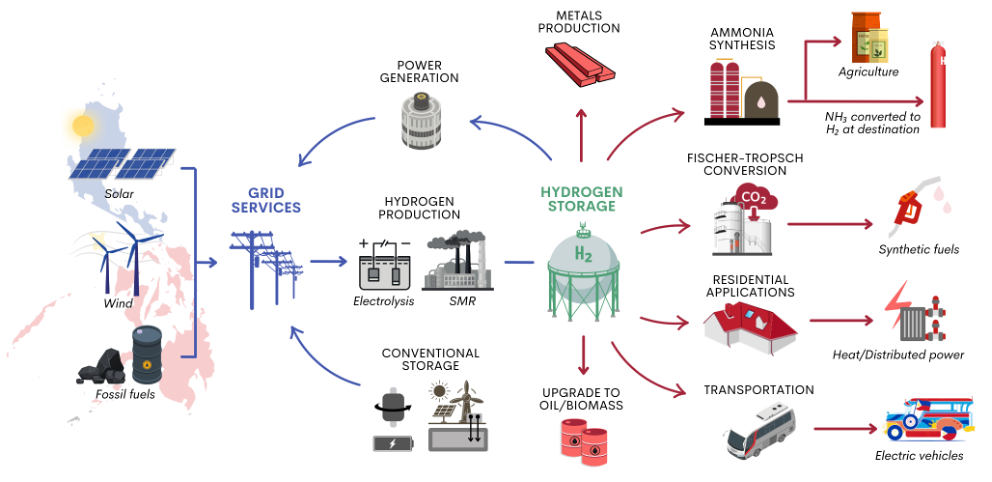VOLUME 17 NUMBER 1 (January to June 2024)

SciEnggJ. 2024 17 (1) 156-167
available online: June 13, 2024
DOI: https://doi.org/10.54645/2024171XDV-46
*Corresponding author
Email Address: jdocon@up.edu.ph
Date received: January 17, 2024
Date revised: March 5, 2024
Date accepted: March 20, 2024
COMMENTARY
Balancing hope and hype on hydrogen’s role in the Philippine energy transition
Chemical Engineering, College of Engineering, University of the
Philippines Diliman, Quezon City 1101, Philippines
2Technology Management Center, University of the Philippines
Diliman, Quezon City, 1101, Philippines
3Energy Engineering Program, National Graduate School of
Engineering, College of Engineering, University of the
Philippines Diliman, Quezon City, 1101, Philippines
Hydrogen (H2) presents a unique opportunity for the Philippines’ energy landscape. Using hydrogen as an ‘energy vector’ for industrial, power, and transportation applications represents a promising and sustainable solution in its ongoing efforts to address climate change and transition towards a cleaner energy future. However, unlocking this potential requires first addressing regulatory and policy gaps. This challenge has many different facets, such as the need for regulations to support the hydrogen infrastructure development, the establishment of clear standards for safe hydrogen production, storage and handling, streamlining of permit and license applications, monitoring of solar or wind power plants coupled with electrolysis process, provision of more substantial support for research and innovation, and promotion of hydrogen-based products.This policy brief describes the current landscape and identifies the regulatory and policy gaps that policymakers must fill while highlighting the Philippines' potential for hydrogen energy and energy storage in the short and long run. It is crucial to have a complete policy framework that addresses regulatory clarity, financial incentives for infrastructure development, technical capacity, support for R&D, and strategic export planning. The Philippines can utilize its renewable resources, improve energy security, and cut emissions by filling these gaps.
© 2025 SciEnggJ
Philippine-American Academy of Science and Engineering